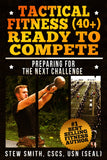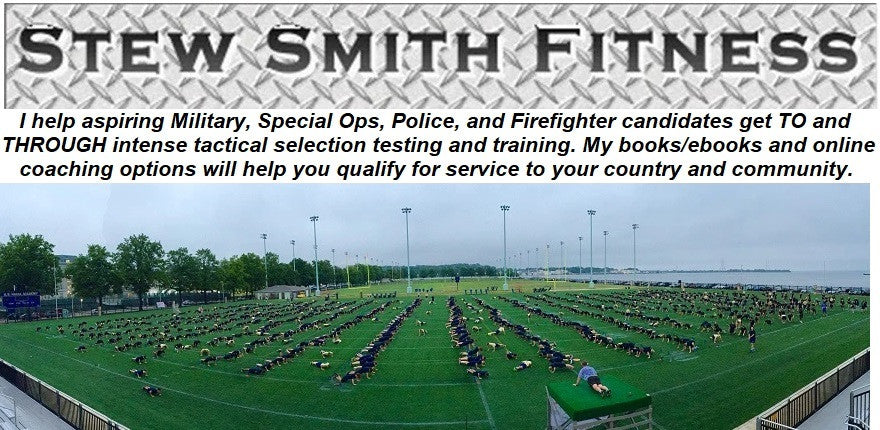First - What is the OODA Loop?
You Do This 100's of Times a Day
So You Should Know...
Observe, Orient, Decide, and Act. No matter what situation we are in this process takes a split second (sometimes) to complete, while more difficult problems may take more than a few seconds to go from observation mode to acting on that observation. Regardless, when we look at the
Tactical Fitness Venn Diagram (fully explained), you can place this square in the bottom left section with
mindset, learning tactical skills, and coordination, because it embodies the process of moving and thinking through problems and tactical situations from menial tasks to life or death situations.
History of the OODA Loop
Air Force Colonel John Boyd, fighter pilot and military strategist described the thinking and acting process as a cycle that could be developed and enhanced with practice. Understanding how the brain and body work together to process information and create solutions to problems easily using the acronym OODA Loop (Observe, Orient, Decide, Act) is the first step. Once you understand these four steps you can then train the mind and body to work better together and make the four part process feel like a continuous movement.
-
My best comparison would be teaching the power clean with a barbell to someone for the first time. Breaking the athletic movement down into sections of dead lift, high pull, hang clean, and front squat, you can see how individual movements can then be trained together to make the power clean a non-stop / fluid movement. The power clean is a highly athletic, quick and powerful movement in the sport of lifting. Your ability to think and react has to be just as fast or faster. When you have a system of understanding the connecting pieces, you can then break them down and train the weakness in order to make the movement smoother and faster. The same can be said for the OODA loop.
-
Colonel Boyd created this system for military operations and specifically for his high speed fighter pilots of the Air Force where a split second can be the difference of life or death. However, over the seven decades since it's creation, this thought / action process has been used in medical training, business, legal issues, law enforcement situations, military strategy, and hand-eye coordination training.
-
Every Day OODA Loop Situation
-
Driving a car - You are constantly in a state of observing hundreds of things at once when in the driver's seat. From feeling the seat, hearing the music on the radio, to observing other vehicles and pedestrians on and off the road. Everything you see, you determine whether or not any one of them is a threat to your safety as well as part of your intended mission (route to destination). As you drive through a green lift, in your peripheral vision on the right hand side, you see someone not stopping at their red light. You quickly surmise that while you are in the right with your current actions, the other person is not paying attention and at that pace and angle the projected time to impact is about 1.5 seconds unless you slam on the brakes. You decide that is the only action to take and you act to pull your foot off the gas, push your foot against the brake pedal, and swerve slightly to the right. OODA Loop saves the day and it likely has more than you realized in each and everyone of your days.
-
OODA - Broken Down with Training Ideas (Tactical Fitness Related)
-
Observe - Situational Awareness (both internal and external) will enhance how well you observe important details. This type of awareness is a tactical mindset and simply being viligant. Practice walking into a room and create a habit of looking for exits, doors, windows, potential threats / dangers (people and machines), and even places for cover and concealment. You can do this anywhere. Look for small details in the room as if you are going to be questioned on the above factors. Keeping your eyes open with a wide focus versus a tight focus on any one of the potential threats will allow you to "see" better and even perhaps help you predict situations from various triggers from body language of others when alerted.
- IF you want a rush of adrenaline during a workout observe all of the elements above then role play a number of any situations and how you would react. Whether it is a weight falling on a fellow lifter, a fight in the gym or a loss of power / lighting. Imagine how you would take these observations to the next steps.
Orient - This phase is important as it includes your life experiences, job skills, education, creative thinking, and tactical training which largely determines your options that you have available to choose from depending on the situation. When you are alone these thoughts of options will be singularly with you, but when with a group / team / partner, communication is critical in this phase as well as you either have to be an excellent listener or provider of the solution before you actually decide what to do either individually or as a team. Mix in team training to improve this skill. One of the ways we do this is with an injured man drill on a stretcher with 5-6 people taking turns to carry the stretcher through a trail run of 2-3 miles long. This requires constant communication and determining how to handle obstacles, trade out load bearing equipment, share carrying injured person's gear and so much more.
-
Decide - Deciding on which course of action can be a quick version of test and evaluate or a lightning fast reaction to escape danger. The brain is wired to make a decision, however with a steady flow of information from both the observation and orientation phases, a smoother process to decide can occur. Freezing in that moment either in denial or wonderment can happen and unfortunately that loss of time can be the difference between life and death. However, the tactical pause can be the element of patience to let a situation play out before acting much like in a game a chess as you wait on an aggressor's next move can also be the difference between life and death. All situations are different and the more you understand how this flow works the better you can become at making it not only work faster, but with better accuracy.
-
Act - The conglomeration of attention to detail, information received, training, education, and experience to pull from make up the most important part of the OODA Loop. However, this action will also create the need to observe new details created from your action so the cycle continues to loop again and again. The game of mental and physical agility have combined and can further be developed on a basic level with standard hand - eye coordination training.
-
-
Hand - Eye Coordination Training - Throwing and catching, shooting and moving, and even videos games can be great ways to mix in hand-eye coordination training into your day. When you are facing down a baseball speeding at your head, you have but a moment to observe, orient, decide to duck or catch it, and then make that movement. This OODA Loop is absolutely how we think, react, and move through life and the better your hand-eye coordination and mind and body connection we have make us a well-oiled machine. The faster the process from Observations to Actions is done with the correct outcome or at least a successful option is the ultimate goal of perfecting and practicing the process.
The OODA Loop is a natural occuring process, however doing it well is a perishable skill and needs practice with intention. You will continue to do this anyway, but with intended practice now that you understand the process and the steps of thinking and doing, you can make it better.
Who Is The Coach, Trainer, Author Stew Smith?
 |
I'm the former Navy SEAL that special ops candidates go to for books, ebooks and online coaching to prepare themselves to get to and through intense tactical assessment and selection programs and qualify for service in their chosen tactical profession. See More at StewSmithFitness.com
|
What Programs Are Right For YOU?
It depends on your scores compared to other successful students. See the Assessment Tool to Make it To and Through Selection and se where you stack up with all the elements of fitness - not just a PST score.





It depends: The Complete Guide to Navy SEAL Fitness is a classic and focuses on high rep calisthenics and running and swimming base. You will build up your running over 12-18 weeks to 20 miles but very fast paced focus on both the 1.5 mile run for the PST and the 4 mile timed run for weekly run test at BUDS. If you are an athlete with a strong power / strength background in lifting and not running or swimming, Navy SEAL Fitness is ideal for you. IF you need some place to start Navy SEAL Fitness is ideal for you as well because a calisthenics base / running / swimming progression is a good place to build a foundation. Though you will likely need to spend some time in the Navy SEAL Weight Training Book OR if Navy SEAL FItness is too challenging, go with Navy SEAL SWCC, EOD, Diver, PST Phase 1 Workout. Phase 1 is a good starting point if Navy SEAL Fitness program is too tough. Phase 1 is what I call a beginner guide, but it is still challenging. It is geared toward those who are scoring minimally or failing their Navy PST test - 500yd swim, pushups, situps, pullups, 1.5 mile run. It is easier than The Complete Guide to Navy SEAL Fitness and a good prep course before attempting it.
Tactical Fitness Series - Tactical Fitness, Tactical Strength, and Tactical Mobility is an ALL encompassing program that focuses on lifting, calisthenics, run, ruck, swim, speed, agility, and flexibility / mobility. Many people focusing on USMC (OCS, RECON, MarSOC) Army Ranger / SF, Air Force Special Warfare, SWAT / Federal Law Enforcement, and Navy Special Warfare have done very well focusing on the Tactical Fitness Series and developing themselves into an all-round Tactical Athlete.

The Tactical Fitness Over 40 Book / eBook Series
- Be an asset after 40, 50 and beyond.
Tactical Fitness (40+) Phase 1, Phase 2, Phase 3, Phase 4




More Options:
Get Weekly Unpublished Workouts Tested and Evaluated by local
Stew Smith Training programs.
Stew Smith Fitness Membership – You have access to years of workouts for both beginner / intermediate and advanced / special ops levels of fitness. Each week you will receive new and unpublished workouts being tested by Navy SEAL veteran / Stew Smith CSCS and his local group of future tactical professionals in both basic training and advanced spec ops training programming. The latest videos, articles, and other programming will be part of the weekly data feed to members as well. We go through the Seasonal Tactical Fitness Periodization program one week at a time.

Join the Online PT CLUB:
One On One Coaching with Stew Smith
If You Need a More Personalized Approach to Fit Your Needs, Goals, Time per Day, Days per week, Facilities, Abilities, etc...Try Online Coaching




















